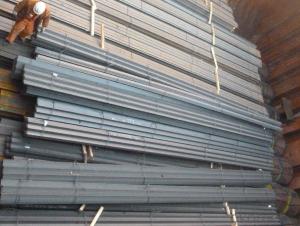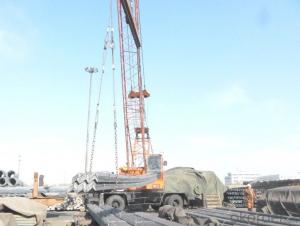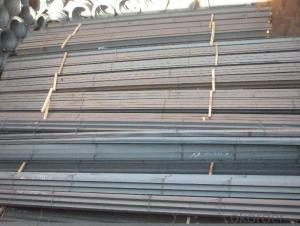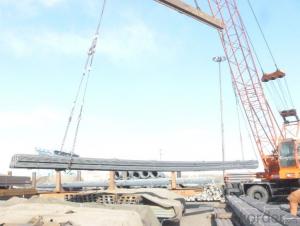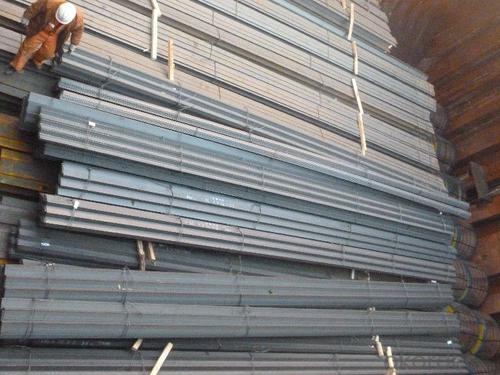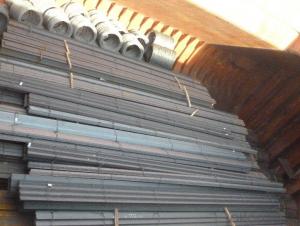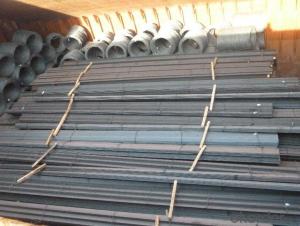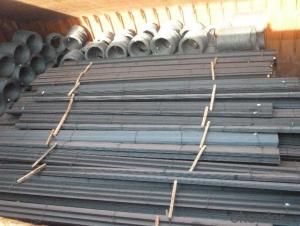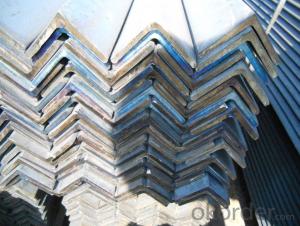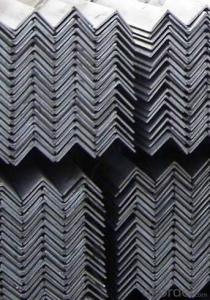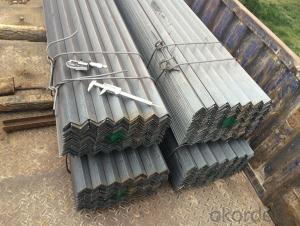Hot Rolled Structure Steel Equal Angle Bar
- Loading Port:
- China Main Port
- Payment Terms:
- TT or LC
- Min Order Qty:
- -
- Supply Capability:
- -
OKorder Service Pledge
OKorder Financial Service
You Might Also Like
Product Description:
OKorder is offering Structure Steel Hot Rolled Angle Bar at great prices with worldwide shipping. Our supplier is a world-class manufacturer of steel, with our products utilized the world over. OKorder annually supplies products to European, North American and Asian markets. We provide quotations within 24 hours of receiving an inquiry and guarantee competitive prices.
Product Applications:
Trusses;
Transmission towers;
Telecommunication towers;
Bracing for general structures;
Stiffeners in structural use.
Product Advantages:
OKorder's Structure Steel Hot Rolled Angle Bar are durable, strong, and resist corrosion.
Main Product Features:
· Premium quality
· Prompt delivery & seaworthy packing (30 days after receiving deposit)
· Corrosion resistance
· Can be recycled and reused
· Mill test certification
· Professional Service
· Competitive pricing
Product Specifications:
1.Standards:GB,ASTM,BS,AISI,DIN,JIS
2.Invoicing on theoretical weight or actual weight as customer request
3.Material: JIS G3192,SS400;SS540.
4. Payment terms:
1).100% irrevocable L/C at sight.
2).30% T/T prepaid and the balance against the copy of B/L.
3).30% T/T prepaid and the balance against L/C
5.Sizes:
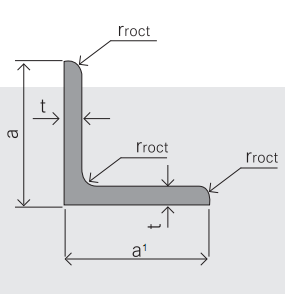
6. Material Specifications:
Grade | Yield Strength,N/mm² | Extension Strength N/mm² | |||
Thickness of Steel,mm | |||||
≦16 | >16-≦40 | >40-≦100 | >100 | ||
SS330 | ≧205 | ≧195 | ≧175 | ≧165 | 330-430 |
SS400 | ≧245 | ≧235 | ≧215 | ≧205 | 400-510 |
SS490 | ≧285 | ≧275 | ≧255 | ≧245 | 490-610 |
SS540 | ≧400 | ≧390 | - | - | ≧540 |
Packaging & Delivery of Angle Steel
1. Transportation: the goods are delivered by truck from mill to loading port, the maximum quantity can be loaded is around 40MTs by each truck. If the order quantity cannot reach the full truck loaded, the transportation cost per ton will be little higher than full load.
2. With bundles and load in 20 feet/40 feet container, or by bulk cargo, also we could do as customer's request.
Production flow of Angle Steel
Material prepare (billet) —heat up—rough rolling—precision rolling—cooling—packing—storage and transportation
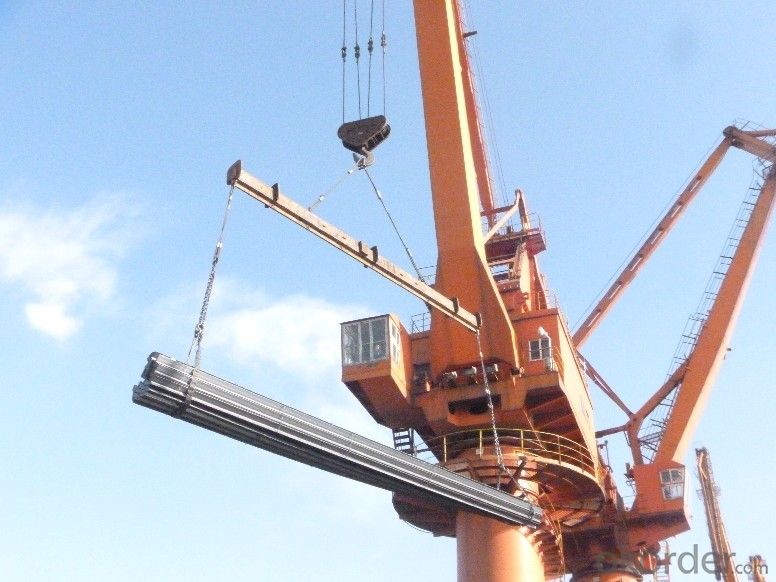
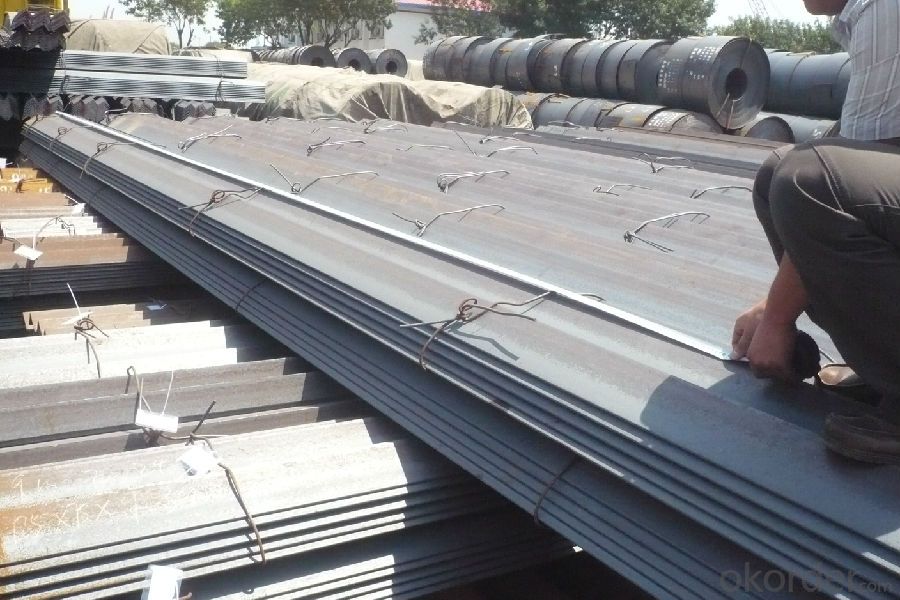
FAQ:
Q1: Why buy Materials & Equipment from OKorder.com?
A1: All products offered byOKorder.com are carefully selected from China's most reliable manufacturing enterprises. Through its ISO certifications, OKorder.com adheres to the highest standards and a commitment to supply chain safety and customer satisfaction.
Q2: How do we guarantee the quality of our products?
A2: We have established an advanced quality management system which conducts strict quality tests at every step, from raw materials to the final product. At the same time, we provide extensive follow-up service assurances as required.
Q3: How soon can we receive the product after purchase?
A3: Within three days of placing an order, we will begin production. The specific shipping date is dependent upon international and government factors, but is typically 7 to 10 workdays.
Q4: What makes stainless steel stainless?
A4: Stainless steel must contain at least 10.5 % chromium. It is this element that reacts with the oxygen in the air to form a complex chrome-oxide surface layer that is invisible but strong enough to prevent further oxygen from "staining" (rusting) the surface. Higher levels of chromium and the addition of other alloying elements such as nickel and molybdenum enhance this surface layer and improve the corrosion resistance of the stainless material.
- Q: Can steel angles be used for framing or supporting exterior cladding systems?
- Yes, steel angles can be used for framing or supporting exterior cladding systems. Steel angles are commonly used in construction as they provide structural support and stability. When used for framing or supporting exterior cladding systems, steel angles offer durability and strength, ensuring the stability and longevity of the cladding. They are often used to create a framework or support structure for attaching the cladding materials, such as siding or panels, to the building's exterior. Steel angles can be easily customized and fabricated to fit specific design requirements, making them a versatile choice for framing or supporting exterior cladding systems.
- Q: Are steel angles suitable for playground equipment?
- Yes, steel angles are suitable for playground equipment. They provide structural support, stability, and durability, making them ideal for creating safe and long-lasting playground structures.
- Q: How are steel angles defined?
- Steel angles are defined based on the length of their legs, thickness, and their shape, which is typically L-shaped. These angles are commonly used in construction and engineering applications for structural support and framing purposes.
- Q: Can steel angles be used for fencing?
- Yes, steel angles can be used for fencing. Steel angles are commonly used in fencing applications due to their strength, durability, and versatility. They provide a sturdy framework for the fence, ensuring stability and security. Steel angles can be easily installed, and their design allows for different fence styles and heights. Additionally, they are resistant to rust and corrosion, making them suitable for outdoor use. Overall, steel angles are a popular choice for fencing projects due to their structural integrity and long-lasting performance.
- Q: Are steel angles subject to deformation?
- Yes, steel angles are subject to deformation. Steel is a strong and durable material, but it is not immune to the forces that can cause deformation. Deformation can occur in steel angles due to various factors such as excessive loads, bending moments, temperature changes, and improper design or installation. When subjected to these forces, steel angles can experience bending, twisting, or warping, leading to a change in their original shape. To prevent or minimize deformation, engineers and designers can consider factors such as selecting the appropriate steel grade, calculating load capacities, and ensuring proper support and bracing.
- Q: What is the minimum thickness for a steel angle bracket?
- The minimum thickness of a steel angle bracket depends on its specific application and the load it is meant to bear. Typically, a thickness of 1/8 inch (3.175 mm) is commonly employed for angle brackets, providing ample strength and rigidity to withstand normal loads and forces. However, it is crucial to bear in mind that for heavier loads or specialized uses, thicker steel brackets may be necessary to guarantee structural integrity and safety. It is advisable to seek the advice of a structural engineer or adhere to industry standards and guidelines to ascertain the suitable minimum thickness for a steel angle bracket in a particular application.
- Q: How do you calculate the compression capacity of a steel angle?
- To calculate the compression capacity of a steel angle, you need to consider the cross-sectional area of the angle and the material's yield strength. The compression capacity can be determined by multiplying the cross-sectional area of the angle by the yield strength of the steel.
- Q: What are the different methods for fastening steel angles?
- There are several methods for fastening steel angles, depending on the specific application and load requirements. Some common methods include: 1. Bolting: One of the most popular methods for fastening steel angles is through bolting. This involves using bolts, washers, and nuts to secure the angle to a structure or another piece of steel. Bolts provide a strong and reliable connection, especially when tightened to the appropriate torque specification. 2. Welding: Welding is another common method for fastening steel angles, particularly when a permanent and robust connection is needed. It involves melting the base metal and the angle together, creating a strong joint. Welding can be done using various techniques such as arc welding, MIG welding, or TIG welding. 3. Riveting: Riveting involves using rivets to join the steel angles together or to other components. This method creates a secure and durable connection, especially in applications where vibration or movement may occur. Riveting requires drilling holes in the steel angles and using a rivet gun to insert the rivets through the holes. 4. Adhesive bonding: In certain applications, adhesive bonding can be used to fasten steel angles. This involves applying a high-strength adhesive or epoxy between the angle and the surface it is being attached to. Adhesive bonding provides a clean and aesthetically pleasing connection while also distributing loads evenly across the joint. 5. Clamping: Clamping is a temporary method for fastening steel angles, often used during assembly or construction. It involves using clamps or brackets to hold the angles in place until a more permanent fastening method, such as bolting or welding, can be applied. Each method has its advantages and disadvantages, and the choice depends on factors such as load requirements, structural design, cost, and the need for disassembly or adjustability. It is essential to select the appropriate fastening method to ensure the safety and integrity of the steel angles in their intended application.
- Q: How many meters is one angle steel?
- According to the specification number, the selection range of the domestic angle iron is 3 - 9m, 4 - 12M, 4 - 19m, 6 - 19m four scopes. The length of Japanese steel angle is chosen from 6 to 15m.
- Q: What are the different surface treatments for steel angles?
- Some common surface treatments for steel angles include galvanizing, painting, powder coating, and plating.
Send your message to us
Hot Rolled Structure Steel Equal Angle Bar
- Loading Port:
- China Main Port
- Payment Terms:
- TT or LC
- Min Order Qty:
- -
- Supply Capability:
- -
OKorder Service Pledge
OKorder Financial Service
Similar products
Hot products
Hot Searches
Related keywords
